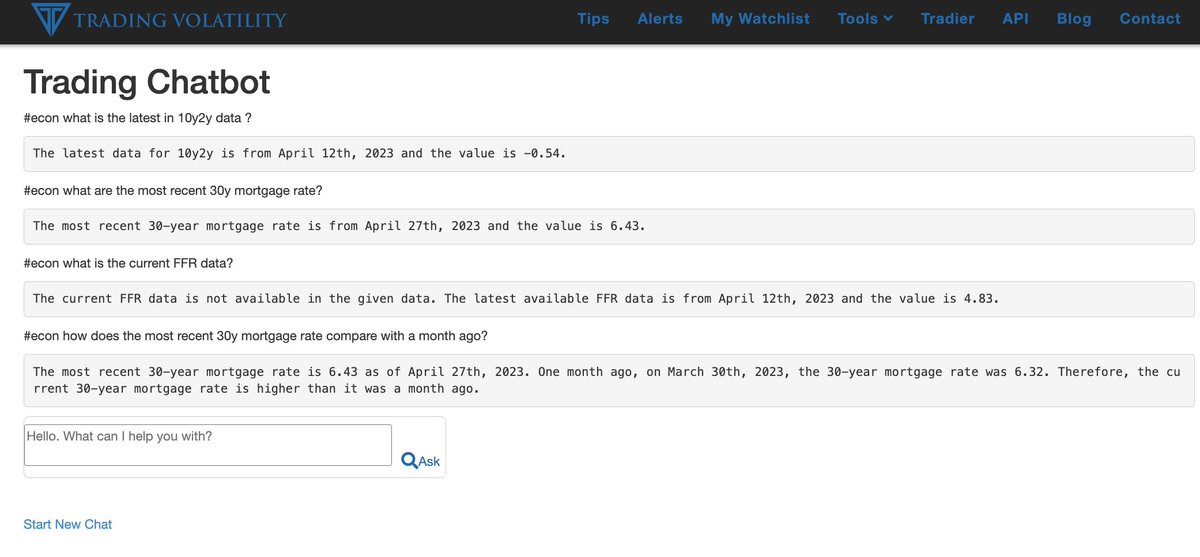ChatGPT can already be used to perform various tasks related to finance and stocks & options trading, including:
1) get stock and options data for summarizing data:
#stocks
Examples:
- calculate the sum of the call options volume for all strikes in $SPY for an expiration
-… twitter.com/i/web/status/1…
1) get stock and options data for summarizing data:
#stocks
Examples:
- calculate the sum of the call options volume for all strikes in $SPY for an expiration
-… twitter.com/i/web/status/1…

2) use probabilities to identify a day's likely closing price.
https://twitter.com/TradeVolatility/status/1651949539568529408
3) Obtain and summarize earnings reports
https://twitter.com/TradeVolatility/status/1651233116864802825
5) Added in some contextual awareness, which will be critical when we start feeding the bot large dataframes.
#ChatGPT
#ChatGPT

6) Added some multi-variable queries into our ChatGPT project.
💪
Thank you @hwchase17 and others for building an easy framework!!
Every day brings new capabilities! 🤖
💪
Thank you @hwchase17 and others for building an easy framework!!
Every day brings new capabilities! 🤖

• • •
Missing some Tweet in this thread? You can try to
force a refresh















